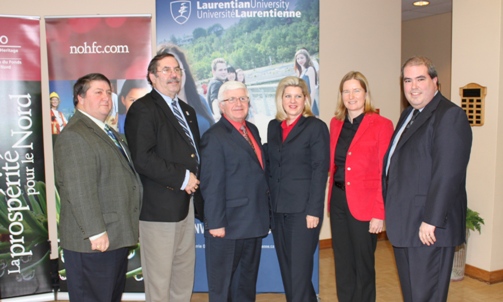
SUDBURY, ON (DECEMBER 19, 2012) –The Honourable Rick Bartolucci, Minister of Northern Development and Mines and Chair of the Northern Ontario Heritage Fund Corporation (NOHFC), today announced funding for the establishment of a Research Chair in Occupational Health and Safety at Laurentian University.
The new Research Chair in the existing Centre for Research in Occupational Safety and Health (CROSH) will lead research relevant to a broad range of workplaces. The Research Chair will work to make the Centre a national and international leader in occupational health and safety research, development, education, training, and global best practices. The CROSH Research Chair will be supported by a team of research assistants and other personnel.
“Our government continues to partner with universities to support important research initiatives,” said Minister Bartolucci. “I am very pleased that the NOHFC could invest in this Research Chair that will further help establish Laurentian University and Northern Ontario as a leading centre in occupational health and safety.”























